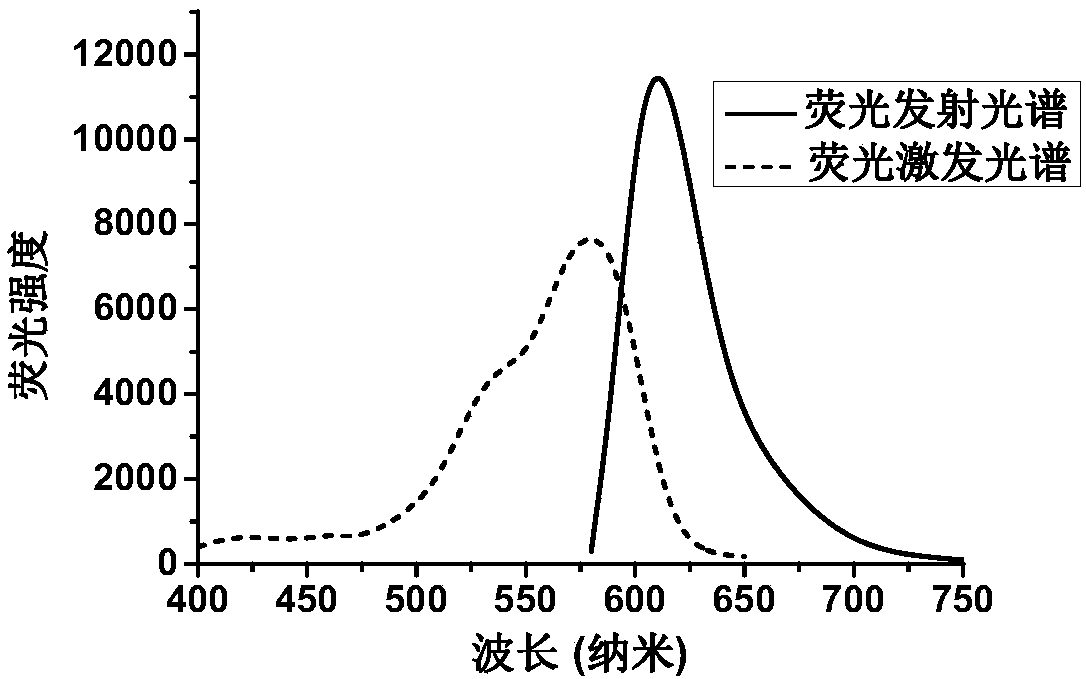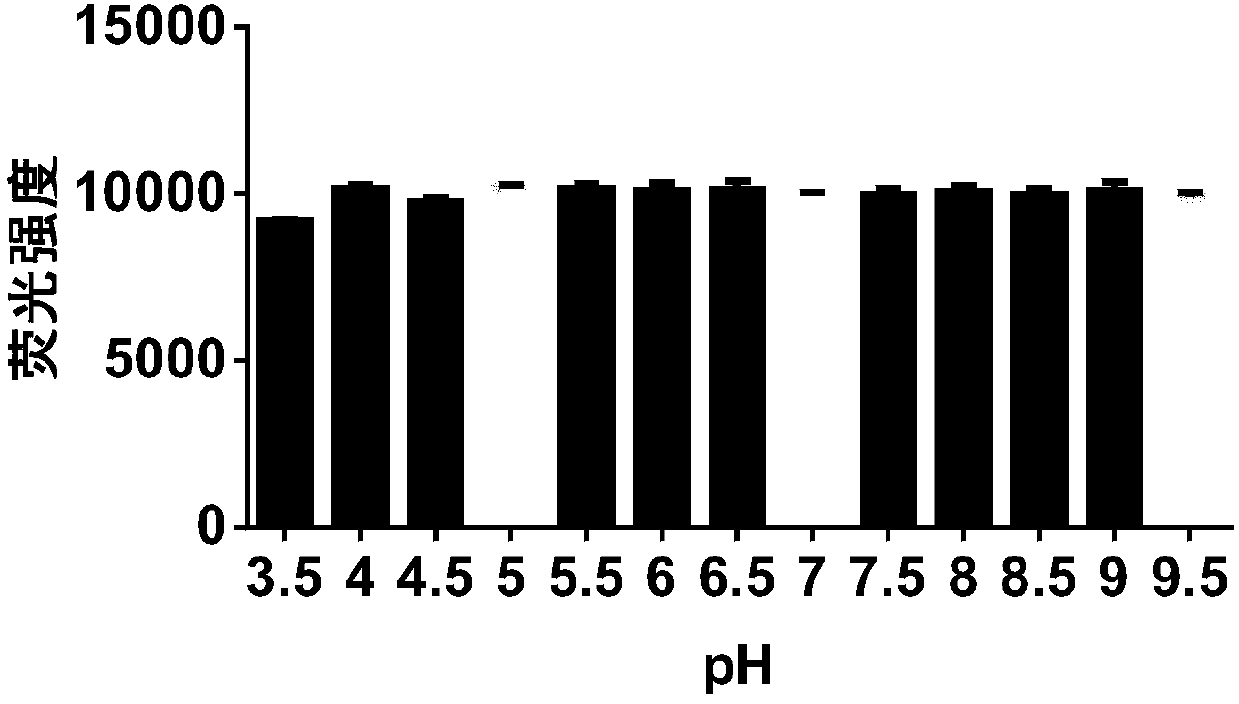Rhodamine-sialic acid conjugate and synthesizing method and application thereof to lysosome imaging
A synthetic method and technology of sialic acid, applied in chemical instruments and methods, sugar derivatives, sugar derivatives, etc., can solve the problems of short cell residence time, loss, poor photostability, etc.
- Summary
- Abstract
- Description
- Claims
- Application Information
AI Technical Summary
Problems solved by technology
Method used
Image
Examples
specific Embodiment
[0042] 1) Synthesis of rhodamine-sialic acid conjugates:
[0043] Take 300mg of 9-aminosialic acid and 400mg of N-hydroxysuccinimide rhodamine X-5 carboxylate, add dioxane (3mL) and water (3mL) to the mixed solution, use saturated sodium carbonate solution to adjust the pH to 9, and react overnight . The solvent in the reaction system was removed, and 289 mg of rhodamine-sialic acid conjugate was obtained by HPLC separation.
[0044] 2) Prepare a standard solution with a concentration of 20mM rhodamine-sialic acid conjugate:
[0045] Weigh 8 mg of rhodamine-sialic acid conjugate and dissolve in 0.5 mL of ultrapure water. That is, a standard solution of 20 mmol / L (20 mM) rhodamine-sialic acid conjugate was obtained.
[0046] 3) Collect the absorption spectrum, fluorescence excitation spectrum and fluorescence emission spectrum of the rhodamine-sialic acid conjugate:
[0047] Take 1 μL rhodamine-sialic acid conjugate standard solution and mix it with 2mL ultrapure water to o...
PUM
 Login to View More
Login to View More Abstract
Description
Claims
Application Information
 Login to View More
Login to View More - R&D
- Intellectual Property
- Life Sciences
- Materials
- Tech Scout
- Unparalleled Data Quality
- Higher Quality Content
- 60% Fewer Hallucinations
Browse by: Latest US Patents, China's latest patents, Technical Efficacy Thesaurus, Application Domain, Technology Topic, Popular Technical Reports.
© 2025 PatSnap. All rights reserved.Legal|Privacy policy|Modern Slavery Act Transparency Statement|Sitemap|About US| Contact US: help@patsnap.com



